

WARNING! The Sun is extremely dangerous. Looking at it
with any sort of optical aid will result in instant blindness.
Look here to
see how I do it.
On the previous page I said that I had imaged the Sun in a variety of wavelengths. The filters I used were a standard IR-block, an IR-pass (λ>685 nm), and the Astronomik Hα, OIII, and SII filters. I should emphasise that the Hα filter is not the very narrow-band filter used by solar telescopes, but the relatively broad-band one used for imaging emission nebulae. All the pictures below were the result of 40 individual frames (apart from the IR-pass picture which was only 9 frames) captured with appropriate exposures (Hα and OIII 0.03 sec, SII 0.05 sec, IR-block 0.002 sec, and IR-pass 0.001 sec). They were processed almost identically in RegiStax, stacking all frames and stretching the histograms as appropriate.
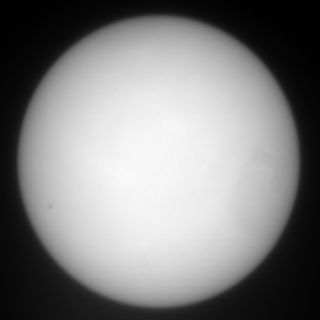 IR block IR block
|
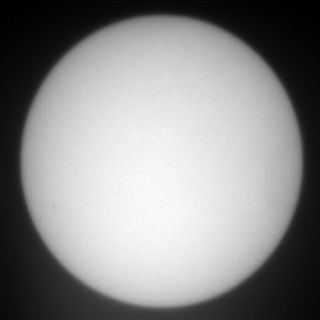 IR pass IR pass
|
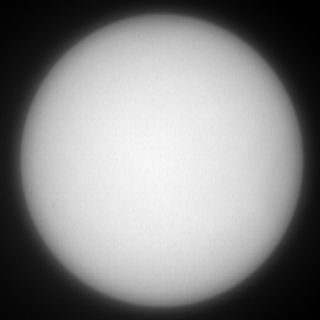 Hα Hα
|
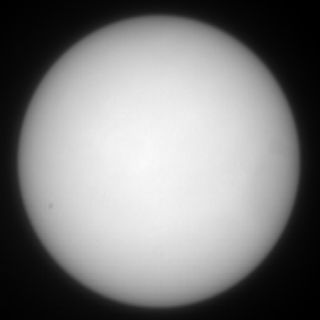 OIII OIII
|
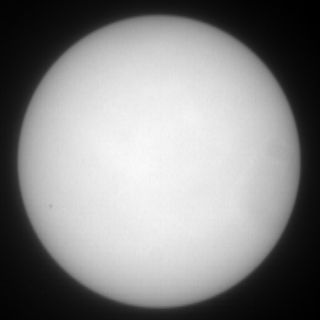 SII SII
|
There are signs of dust bunnies (the Sun is very good at revealing dust on the optics), and this camera was mounted on my LX200, so the bunnies were not blurred out by movement as tended to happen when it was mounted on the poorer-tracking ETX125. Nevertheless I find these pictures interesting. I was unable to enhance the pictures with wavelets in RegiStax because that produced a mottling which I can only attribute to noise in these images which are stacks of only 40 frames. Even so, I think the spot is not as clear as I would expect and is different at different wavelengths. I did find focusing difficult as this camera takes three or four seconds to download an image, and the sunspot is so weak that the faster focusing frame did not help much either. My close-up picture on the previous page was taken with my DMK camera, which will be a better choice in future, I think.